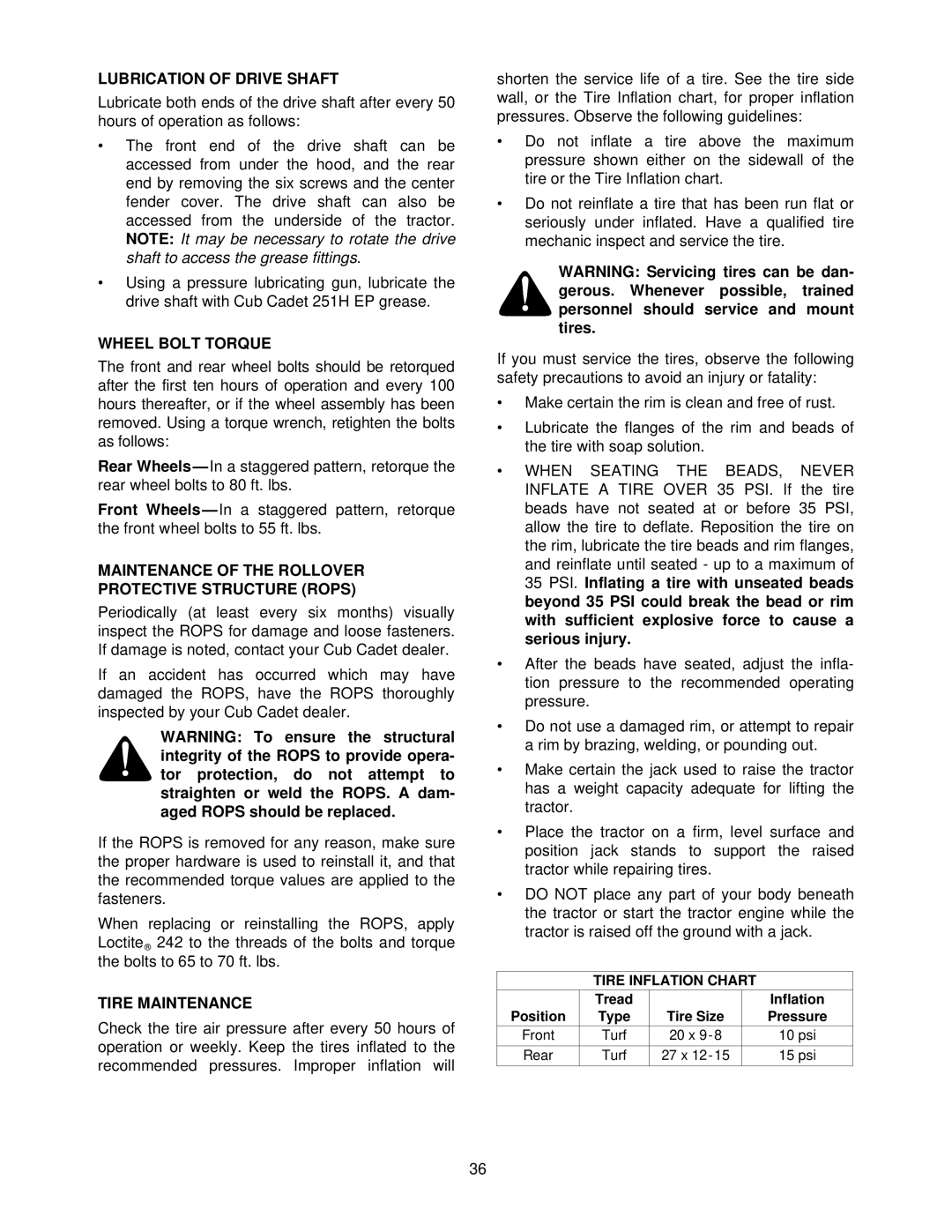7252 specifications
The Cub Cadet 7252 is a noteworthy addition to the lineup of robust and reliable lawn tractors designed for residential homeowners and landscaping professionals alike. This model combines power, versatility, and advanced technology to deliver an exceptional mowing experience.One of the standout features of the Cub Cadet 7252 is its powerful engine. It is equipped with a reliable, air-cooled Kohler engine, providing ample horsepower to tackle even the most demanding mowing tasks. This engine delivers smooth and consistent performance, ensuring that users can cut through thick grass and uneven terrain with ease. The hydrostatic transmission further enhances functionality by offering a seamless driving experience without the need for manual gear shifting.
The cutting deck of the Cub Cadet 7252 is another highlight. With a wide 50-inch cutting deck, it allows for efficient mowing over large areas, reducing the time spent on lawn maintenance. The deck features a reinforced steel construction for durability and longevity, capable of withstanding the rigors of regular use. Additionally, users can achieve different cutting heights with ease, thanks to the 12 position height adjustment feature, ranging from 1 to 4 inches.
Technologically, the 7252 model integrates innovative features for enhanced comfort and ease of use. The ergonomic high-back seat provides maximum support during extended mowing sessions, while the comprehensive dashboard displays essential information, such as fuel level and engine status, allowing for better operation management.
Furthermore, this lawn tractor is designed with user convenience in mind. It features a tight turning radius, which makes maneuvering around obstacles such as trees and flower beds incredibly easy. The Cub Cadet 7252 also offers optional attachments like baggers and snow blowers, making it a versatile tool for various seasonal tasks beyond lawn care.
Overall, the Cub Cadet 7252 is engineered for performance, comfort, and versatility. Combining a powerful engine, wide cutting deck, and innovative technologies, it serves as an excellent solution for homeowners looking to maintain their lawns efficiently while enjoying the convenience of modern machinery.

